11 Must-See Stops On A Road Trip Around Ireland

Planning a road trip around the Emerald Isle? Ireland’s winding roads lead to breathtaking landscapes, ancient castles, and charming villages that seem frozen in time. From rugged coastal cliffs to vibrant city streets, this small island packs an incredible variety of experiences into an area you can drive across in just a few hours.
Grab your map and let’s explore the 11 unforgettable stops that should be on every Ireland road trip itinerary.
1. The Cliffs of Moher: Nature’s Dramatic Masterpiece

Standing 702 feet above the Atlantic Ocean, these majestic cliffs stretch for nearly 8 miles along Ireland’s western shore. The raw power of nature hits you immediately as fierce winds carry salt spray from waves crashing against the rocks below.
Visitors can walk along well-maintained pathways with stunning views that change with the light and weather. On clear days, you might spot the Aran Islands floating on the horizon like emerald jewels.
O’Brien’s Tower, built in 1835, offers the highest vantage point for photographers and dreamers alike. I recommend arriving early morning or late afternoon to avoid crowds and catch the most magical lighting for photos. The visitor center, built into the hillside, provides fascinating insights about the cliffs’ geology and wildlife.
2. Dublin’s Temple Bar: The Beating Heart of Irish Nightlife
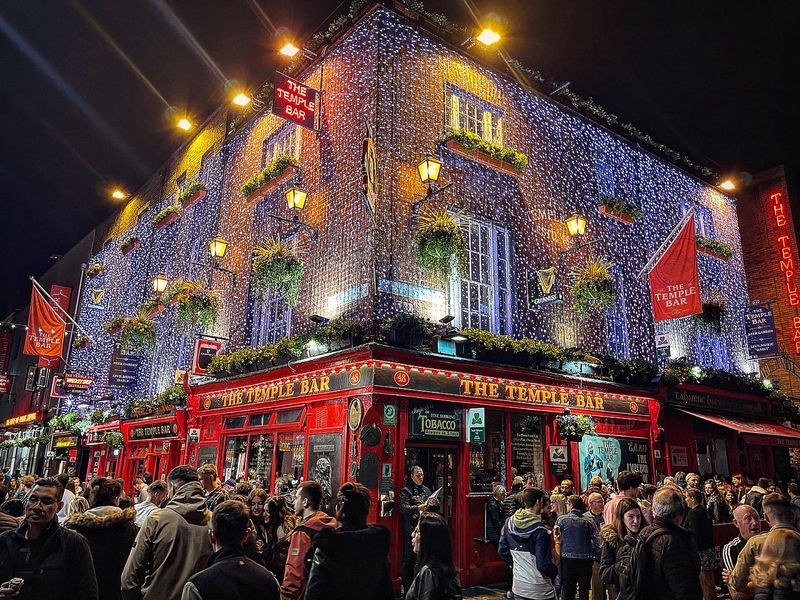
Cobblestone streets echo with laughter and traditional music in this famous cultural quarter. Temple Bar isn’t just one pub – it’s an entire district filled with colorful buildings, street performers, and the warm glow of hospitality that Ireland is famous for.
During daytime hours, art galleries, vintage shops, and weekend markets showcase local crafts and treasures. The atmosphere transforms completely as evening falls, with live music spilling from doorways and crowds gathering to dance and sing along to folk tunes.
Though some locals consider it a bit touristy, I still find authentic experiences here among the bustle. Try The Palace Bar for a genuine old-world pub feeling or The Temple Bar itself for the iconic photo opportunity. Food options range from traditional Irish stew to international cuisine, ensuring everyone finds something delicious.
3. The Ring of Kerry: Ireland’s Most Scenic Drive
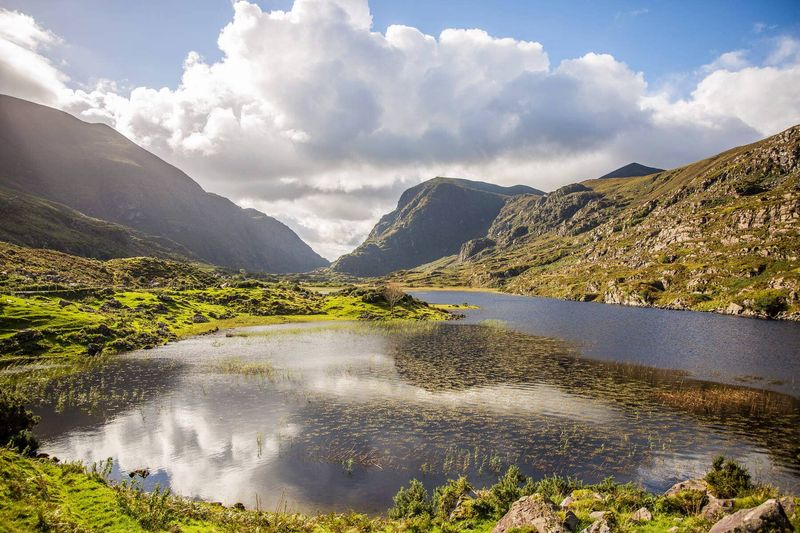
Winding along 111 miles of Ireland’s southwestern coastline, this legendary route delivers one postcard-perfect vista after another. Mountain passes open suddenly to reveal stretches of pristine beaches, while ancient stone forts stand sentinel over valleys draped in fifty shades of green.
Small villages like Sneem and Kenmare offer perfect stopping points to stretch your legs and sample local seafood chowder. Don’t rush this drive – the joy comes from spontaneous detours and unexpected discoveries along the way.
Ladies View, named after Queen Victoria’s ladies-in-waiting who admired it during an 1861 royal visit, provides a panoramic view that will leave you speechless. I suggest driving counterclockwise to avoid tour buses and allowing a full day to complete the circuit. Between April and October, you’ll enjoy longer daylight hours to soak in the magnificent scenery.
4. Killarney National Park: Wilderness Wonderland

Ireland’s first national park spreads across 26,000 acres of ancient oak and yew woodlands, mountains, and lakes. The centerpiece, Muckross House, stands as a magnificent Victorian mansion where even Queen Victoria once stayed, surrounded by meticulously maintained gardens that change with each season.
Wild red deer roam freely through this protected paradise, sometimes appearing like ghosts at dawn or dusk. Torc Waterfall cascades dramatically down 70 feet of moss-covered rocks, especially impressive after rainfall.
Horse-drawn jaunting cars offer a traditional way to explore the park’s highlights, complete with colorful commentary from local drivers. I found kayaking on the lakes provides a peaceful perspective you can’t get any other way. Hiking trails range from gentle lakeside paths to challenging mountain ascents, making this park accessible for all fitness levels and ages.
5. Giant’s Causeway: Hexagonal Wonder of the North
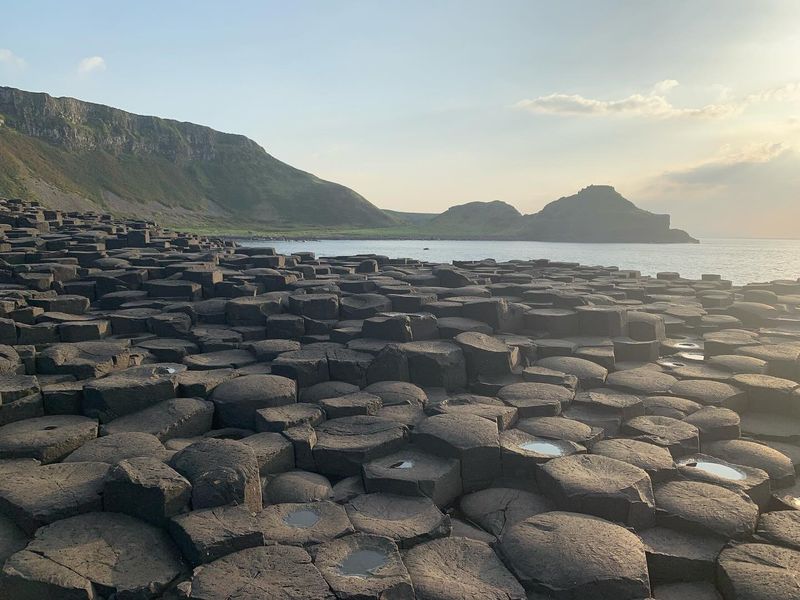
Around 40,000 interlocking basalt columns create one of nature’s most peculiar and fascinating landscapes along Northern Ireland’s coast. These perfectly formed hexagonal stepping stones appear almost manufactured, yet they formed naturally from volcanic eruptions 60 million years ago.
According to legend, Irish giant Finn McCool built this causeway to fight his Scottish rival Benandonner. When you walk across these strange formations with waves crashing around you, it’s easy to believe in giants and folklore.
The visitor center explains both the scientific and mythological stories behind this UNESCO World Heritage site. My favorite time to visit is near sunset when crowds thin out and golden light transforms the black stones.
Comfortable walking shoes are essential as surfaces can be slippery. The nearby Bushmills Distillery offers warming whiskey tastings – perfect after braving the often blustery coastal conditions.
6. Galway City: Bohemian Rhapsody on the West Coast

Bursting with color, music, and youthful energy, Galway captures hearts with its perfect blend of traditional Irish culture and contemporary creativity. Street performers fill the Latin Quarter with everything from harp music to fire-breathing, while shop fronts painted in rainbow hues house artisan crafts and vintage treasures.
The Spanish Arch stands as a reminder of the city’s trading past, now a popular gathering spot where locals and visitors alike dangle their feet over the River Corrib. Salthill Promenade offers a refreshing seaside walk with views across Galway Bay.
Food lovers rejoice in the city’s exceptional dining scene. From the Saturday market’s fresh oysters to cozy pubs serving hearty stews, Galway’s flavors reflect its coastal location. I always make time for a traditional music session at The Crane Bar, where professional musicians and talented amateurs create magical evenings of authentic Irish music.
7. Blarney Castle: Home of the Gift of Gab
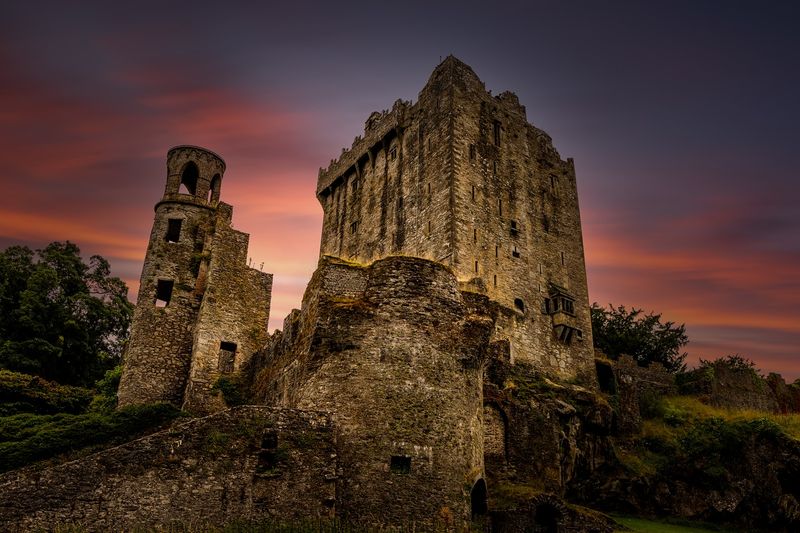
Medieval towers and battlements rise dramatically above lush gardens, creating one of Ireland’s most recognizable landmarks. While kissing the famous Blarney Stone (said to bestow eloquence) draws most visitors, the 15th-century castle offers much more than just a quick smooch with ancient limestone.
Explorers delight in discovering secret passages, dungeon chambers, and murder holes designed for pouring hot oil on invaders. The surrounding gardens reveal hidden treasures like the Poison Garden with its collection of toxic plants and the Witch’s Kitchen with its ancient yew trees.
Witches’ Stone and Wishing Steps add elements of folklore and magic to your visit. I recommend setting aside at least half a day to properly experience both castle and gardens. Climbing to the stone requires navigating narrow, winding stairs – not recommended for those with mobility issues.
The on-site Stable Yard Café offers delicious scones and tea when you need refreshment.
8. The Dingle Peninsula: Wild Atlantic Beauty

Jutting into the Atlantic Ocean like a defiant fist, this rugged peninsula showcases Ireland at its most untamed and authentic. Narrow roads wind between towering cliffs and crescent beaches where surfers brave the powerful waves rolling in from America.
Slea Head Drive loops around the peninsula’s western edge, passing ancient stone beehive huts, early Christian sites, and Star Wars filming locations. The cheerful town of Dingle itself centers around a working fishing harbor where you might spot Fungie, the peninsula’s famous dolphin resident.
Mountain passes reveal spectacular vistas that change with every shift in weather and light. I found myself pulling over constantly to capture photographs that still couldn’t do justice to the raw beauty. Traditional Irish remains the primary language in many villages here, creating an immersive cultural experience.
Local pubs like Dick Mack’s combine traditional music sessions with remarkable whiskey collections, perfectly capping days spent exploring this magical corner of Ireland.
9. Newgrange: Ancient Mystery Older Than Pyramids
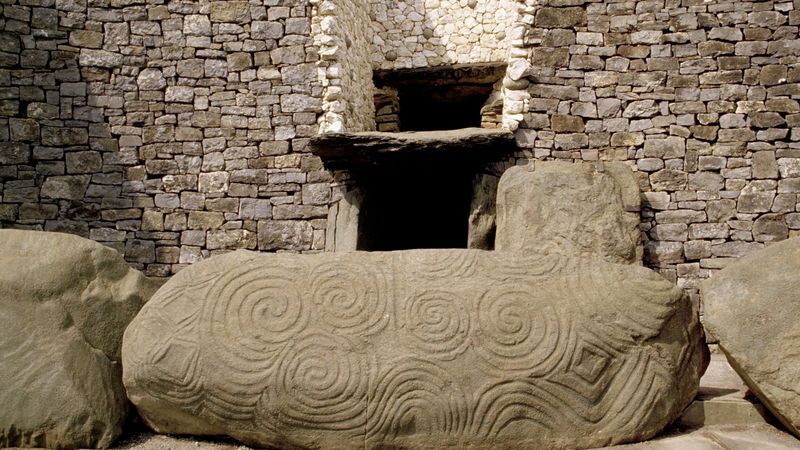
Rising from the Boyne Valley, this 5,200-year-old passage tomb predates both Stonehenge and the Egyptian pyramids. The massive circular mound spans over an acre, its entrance marked by elaborately carved kerbstones featuring mysterious spiral patterns that have puzzled archaeologists for generations.
During winter solstice, something truly magical happens – sunlight penetrates the roof-box above the entrance and illuminates the central chamber for just 17 minutes. This astronomical precision demonstrates the remarkable scientific knowledge of Ireland’s Stone Age inhabitants.
Visitors enter through a narrow passage that opens into a cruciform chamber with a corbelled roof still waterproof after five millennia. The guided tour explains theories about the site’s purpose and construction.
I was particularly moved by the carved triple spiral on the entrance stone – a symbol that has become synonymous with ancient Ireland. Advance booking is essential as daily visitor numbers are strictly limited to protect this UNESCO World Heritage site.
10. Connemara National Park: Wilderness of Purple Mountains

Sprawling across 2,000 hectares of mountains, bogs, heathlands, and woodlands, Connemara represents Ireland’s wild heart. The iconic purple mountains (actually the Twelve Bens range) change color throughout the day as light plays across their quartzite peaks, creating a landscape that feels almost alive.
Wild Connemara ponies graze freely across blanket bogs dotted with yellow gorse and purple heather. The Diamond Hill loop trail offers moderately challenging hiking with panoramic views that stretch to the Atlantic coastline on clear days.
Kylemore Abbey, though technically outside park boundaries, provides the perfect companion visit with its Victorian walled gardens and gothic church. I recommend visiting in late summer when the heather blooms transform mountainsides into purple carpets.
The visitor center in Letterfrack offers excellent exhibits on the region’s ecology and human history. Weather changes rapidly here, so pack waterproofs regardless of forecast – the misty atmosphere is part of Connemara’s mystical charm.
11. Belfast’s Titanic Quarter: Maritime Legacy Reimagined
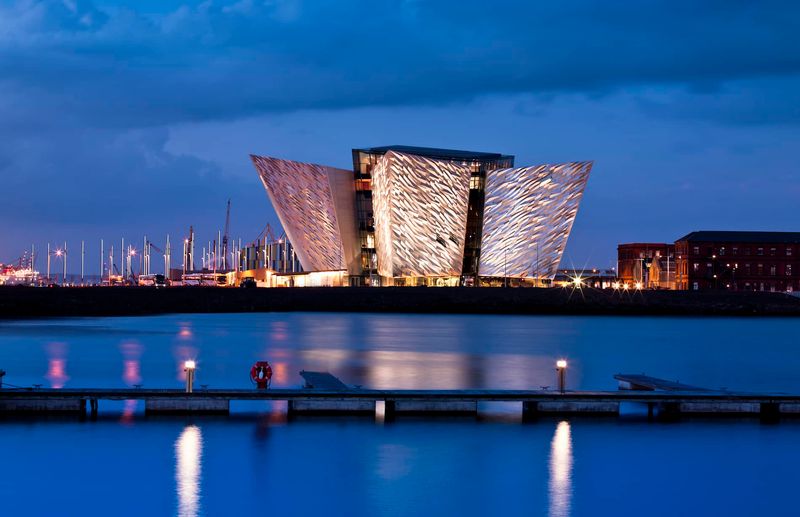
From tragedy springs renewal in this waterfront district where the ill-fated ocean liner was built. The star attraction, Titanic Belfast, rises like a shimmering ship’s prow, its aluminum facade reflecting the harbor waters where Harland & Wolff’s massive yellow cranes still dominate the skyline.
Inside this award-winning museum, nine interactive galleries chronicle Belfast’s shipbuilding heritage and the Titanic’s construction, maiden voyage, and devastating end. The original slipways outside feature life-sized outlines showing the ship’s enormous footprint.
SS Nomadic, the Titanic’s tender ship and the last remaining White Star Line vessel, offers authentic period details from the Edwardian era. I was particularly moved by the personal stories of passengers and crew members shared throughout the exhibitions.
The surrounding area has transformed from industrial wasteland to vibrant urban space with waterfront apartments, film studios, and excellent restaurants. Maritime enthusiasts should also visit HMS Caroline, a WWI light cruiser that survived the Battle of Jutland.
